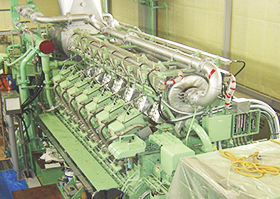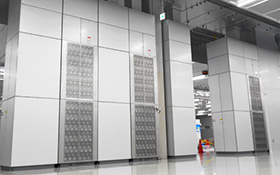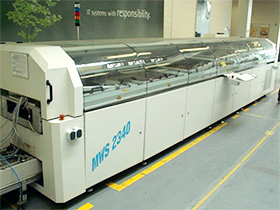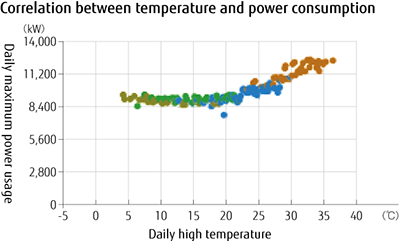Archived content
NOTE: this is an archived page and the content is likely to be out of date.
Case Studies
Reducing Greenhouse Gases (GHG) Emissions and Boosting Energy Intensity
Participation in Demand Response Verification Testing
Fujitsu's Numazu Plant participated in "Demand Response (Negawatt Trading) Verification Testing" conducted by theMinistry of Economy, Trade and Industry. In the verification testing, the company cooperates in suppressing the demand for power during a set period of time when requested (advance notification) by a power company. Incentives (monetary subsidies in the case of verification testing) are given according to amount of decrease and other results. At the Numazu Plant, the methods of suppressing the demand for power (peak cut) included adjusting the operational output of gas engine generators in light of the plant's forecasted demand and utilizing smart switch (Comverge, U.S.) remote operation/control to stop air-conditioning devices, adjust temperatures, etc. In fiscal 2016, we were able to accommodate requests twelve times for a total of 124 MW.
 Gas engine generators
Gas engine generators
[September, 2017]
Using Swirling Induction Type HVAC on Our Semiconductor Wafer Fabrication Line
Mie Fujitsu Semiconductor Limited has added a new production line at the company's Mie plant that uses advanced, environmentally friendly technologies. The cleanroom is equipped throughout with a SWIT® (Swirling Induction Type HVAC System), which will have a smaller environmental footprint than conventional systems while ensuring high-quality manufacturing. This is the world's first use of this technology in wafer fabrication cleanrooms for semiconductors. Compared to existing systems, the annual energy used is expected to be roughly 47% lower for transport power and roughly 32% lower for heat-source power.
 SWIT® HVAC system
SWIT® HVAC system
[September, 2016]
Fujitsu Augsburg Holds Energy Saving Idea Contest for All Employees
Fujitsu Technology Solutions GmbH (Augsburg, Germany) started an Energy Task Force and held a competition among all company employees to gather energy saving ideas, given that their energy expenses have risen four fold over the past 10 years.
Of the more than 400 ideas submitted through the contest, the best were adopted in FY 2015 and have contributed to energy savings. In particular, the company has become the first in Europe to adopt a flow soldering process with low-temperature solder, which affords a nearly 40% reduction in power usage over the conventional process. The new approach has already been applied in the manufacture of over one million electronic device boards.
Through a variety of energy saving measures, Fujitsu Augsburg has reduced electricity and gas utility costs by one million euros annually and has been able to meet the requirements ahead of time for energy audits stipulated by the EU Energy Efficiency Directive.*1
*1 EU Energy Efficiency Directive:
a set of binding measures to help the European Union reach its 20% energy efficiency target by 2020.
 Flow soldering equipment using low-temperature solder
Flow soldering equipment using low-temperature solder
[September, 2016]
Improving Energy Efficiency through a System Optimizing Contracted Electric Power
The Fujitsu Group has built an Environmental Management Dashboard which has been adopted at all of our business sites in Japan, based on a variety of environmental information collected and analyzed in real time and displayed on a portal screen.
We have now added functionality to optimize electric power contracted through the power utility by visualizing peak period reduction measures and automatically transmitting recommendations. Specifically, the system encourages adjustments to equipment power usage by sending alerts indicating the expected times and amounts of power consumption exceeding the contracted power for the next day. From a graph showing the correlation of temperature and power usage, the system makes recommendations for contracted power for the next fiscal year, and displays the cost. Going forward, Fujitsu plans to utilize this system to promote energy saving and cost reductions at sites Group-wide.

[September, 2016]
